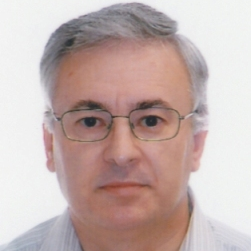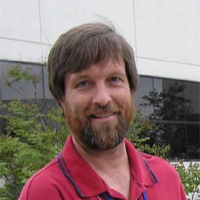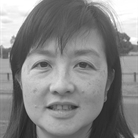Recent Trends and Applications for Imaging Spectroscopy
A special issue of Remote Sensing (ISSN 2072-4292). This special issue belongs to the section "Remote Sensing Image Processing".
Deadline for manuscript submissions: closed (29 February 2020) | Viewed by 19350
Special Issue Editors
Interests: optical remote sensing; imaging spectroscopy; vegetation fluorescence; vegetation biophysical parameters; land surface applications; optical reflectance/fluorescence models; retrieval methods; design of future earth observation missions; dynamical vegetation models; calibration/validation field campaigns
Special Issues, Collections and Topics in MDPI journals
Interests: science questions posed in the context of the interaction of light with matter pursued with imaging spectroscopy in the optical portion of the spectrum
Interests: methane monitoring; fugitive emisions; application of remote sensing for non renewable resource environmental monitoring and agricultural crops; calibration and vailidation of optical sensors; imaging spectroscopy; remote sensing
Special Issues, Collections and Topics in MDPI journals
Interests: imaging spectroscopy with a focus on urban surface materials; spaceborne imaging spectroscopy missions; EnMAP; DESIS; earth observation for soil information; applied spectroscopy
Special Issues, Collections and Topics in MDPI journals
Special Issue Information
Dear Colleagues,
Imaging spectroscopy has become a unique technique to quantify and map the chemical constituents of the Earth surface, the atmosphere, inland waters and oceans, contributing to a better understanding of the dynamics of land surface processes and surface-atmosphere interactions, and providing a wide range of opportunities for operational applications. The advancement in modeling and understanding of the signal, the development of advanced retrieval techniques, and the availability of data with improved spectral, spatial and radiometric resolutions, have contribute to make imaging spectroscopy an advanced and mature technique for remote sensing science and applications.
The recent and near-future launch of several new imaging spectroscopy missions provides an excellent opportunity to review the state of the art in such field, and this is the objective of the Special Issue on Recent Trends and Applications for Imaging Spectroscopy.
This special issue will cover recent results from field / airborne campaigns in preparation of future spaceborne missions, and early results from recently launched space systems, recent advances in retrieval methods and data exploitation tools, and updates on the science and applications of imaging spectroscopy data, with emphasis on new emerging applications. Data calibration and validation aspects, through automated measurements at field sites or dedicated validation campaigns, are also encouraged, including quantification of error sources and estimation of uncertainties in the final derived products. Future plans about new airborne facilities and dedicated new space missions for imaging spectroscopy, and combinations with other data sources for advanced applications, are also encouraged.
Prof. Dr. Jose Moreno
Dr. Robert Green
Dr. Cindy Ong
Dr. Uta Heiden
Guest Editors
Manuscript Submission Information
Manuscripts should be submitted online at www.mdpi.com by registering and logging in to this website. Once you are registered, click here to go to the submission form. Manuscripts can be submitted until the deadline. All submissions that pass pre-check are peer-reviewed. Accepted papers will be published continuously in the journal (as soon as accepted) and will be listed together on the special issue website. Research articles, review articles as well as short communications are invited. For planned papers, a title and short abstract (about 100 words) can be sent to the Editorial Office for announcement on this website.
Submitted manuscripts should not have been published previously, nor be under consideration for publication elsewhere (except conference proceedings papers). All manuscripts are thoroughly refereed through a single-blind peer-review process. A guide for authors and other relevant information for submission of manuscripts is available on the Instructions for Authors page. Remote Sensing is an international peer-reviewed open access semimonthly journal published by MDPI.
Please visit the Instructions for Authors page before submitting a manuscript. The Article Processing Charge (APC) for publication in this open access journal is 2700 CHF (Swiss Francs). Submitted papers should be well formatted and use good English. Authors may use MDPI's English editing service prior to publication or during author revisions.
Keywords
- New imaging spectroscopy systems, including field, UAVs, airborne and satellite sensors and platforms
- Recent airborne campaigns and dedicated field experiments in preparation of future missions
- Early results from recently launched space systems
- Advances in applications in land, atmosphere and oceans
- New emerging applications
- New techniques for the retrieval of geological and biophysical information
- Modeling of the signal and model-inversion approaches
- Advanced retrieval methods
- Synergistic usage of imaging spectroscopy data with other remote sensing data
- Calibration / validation of imaging spectroscopy data
Benefits of Publishing in a Special Issue
- Ease of navigation: Grouping papers by topic helps scholars navigate broad scope journals more efficiently.
- Greater discoverability: Special Issues support the reach and impact of scientific research. Articles in Special Issues are more discoverable and cited more frequently.
- Expansion of research network: Special Issues facilitate connections among authors, fostering scientific collaborations.
- External promotion: Articles in Special Issues are often promoted through the journal's social media, increasing their visibility.
- Reprint: MDPI Books provides the opportunity to republish successful Special Issues in book format, both online and in print.
Further information on MDPI's Special Issue policies can be found here.








